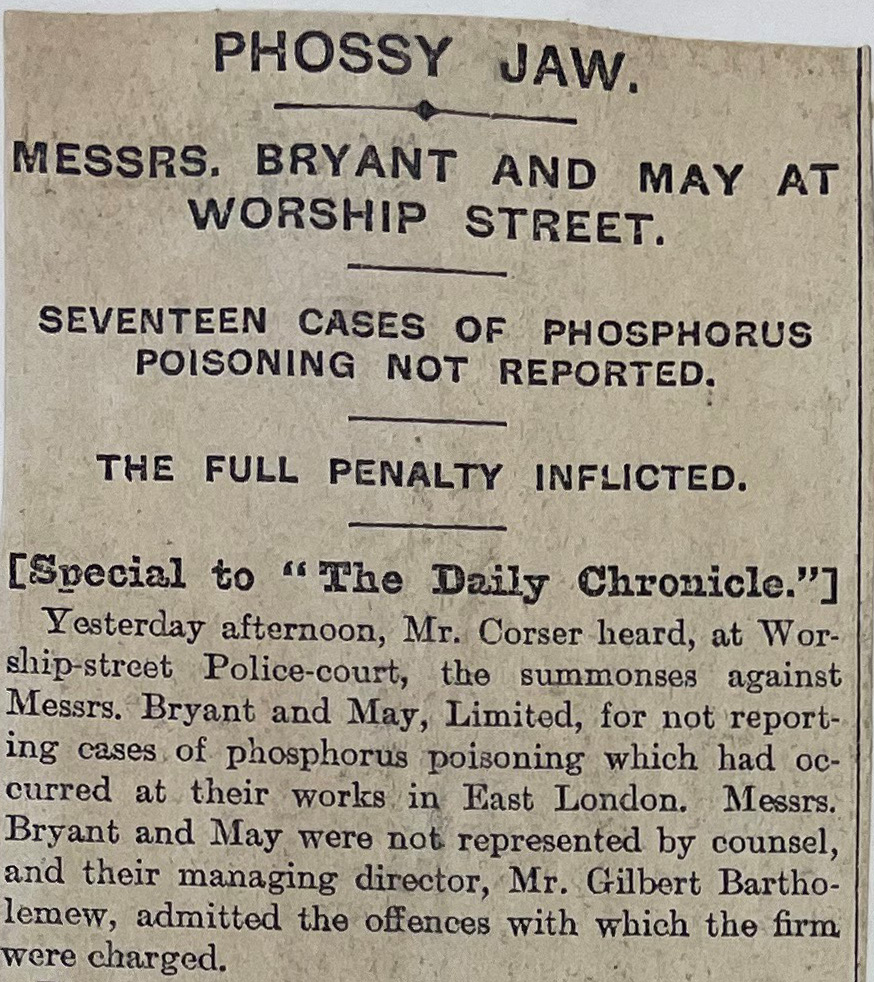
An article from a newspaper entitled ‘The Daily Chronicle’ describing a case of ‘phossy jaw’, 2 June 1898, Catalogue ref: HO 45/9849/B12393D.
Transcript
PHOSSY JAW.
MESSRS. BRYANT AND MAY AT WORSHIP STREET.
SEVENTEEN CASES OF PHOSPHORUS POISONING NOT REPORTED.
THE FULL PENALTY INFLICTED.
[Special to “The Daily Chronicle.”]
Yesterday afternoon, Mr. Corser heard, at Worship-street Police-court, the summonses against Messrs. Bryant and May, Limited, for not reporting cases of phosphorus poisoning which had occurred at their works in East London. Messrs. Bryant and May were not represented by counsel [lawyers involved in the case], and their managing director, Mr. Gilbert Bartholemew, admitted the offences with which the firm were charged
…
Sources 3a – e: Read these extracts from ‘The Daily Chronicle’ describing a case of ‘phossy jaw’.
Phosphorus is a chemical that glows in the dark and burns easily, which is why it was used to make matches.
- What was ‘phossy jaw’?
- Why is this newspaper reporting a story about phosphorus poisoning at the Bryant & May factory?
- How had ‘phossy jaw’ affected the workers?
- Do you think the result of the trial was a fair one?
- If the firm Bryant & May knew about the problem of ‘phossy jaw’, why do you think they tried to keep it quiet for as long as they did?
- How have these events been reported in this newspaper?
- Why was the match girls’ strike and the development of ‘new unionism’ important in the context of the information provided by this source?
